Most of us know the pain of wasted space under our stairs. It sits there empty, gathering dust and random stuff we toss in. But here's a fun fact – 13,000 pet owners turned that dead space into a dream spot for their cats.
You can do it too in 5 easy steps! Add some shelves, cozy beds, and a smart spot for the litter box. Your cats will love having their own secret hideout under the stairs. Plus, you'll smile every time you walk by and see them curled up in their special nook.
It's a win-win that makes both you and your furry friends happy.
Key Takeaways
- Over 13,000 pet owners have turned their under-stairs space into cat rooms, showing this trend's growing popularity.
- A proper cat room needs key items: soft beds, scratch posts 24-36 inches tall, climbing shelves spaced 12 inches apart, and hidden litter boxes.
- Cat doors should be 6×6 inches wide and placed 4 inches from the ground for easy access. LED lights and small fans help keep the space bright and fresh.
- Since April 2022, many cat owners have used peel-and-stick tiles and marble-look flooring to create easy-to-clean surfaces in these spaces.
- Built-in shelves need to support at least 20 pounds each and should be spaced 14-18 inches apart for safe cat jumping between levels.
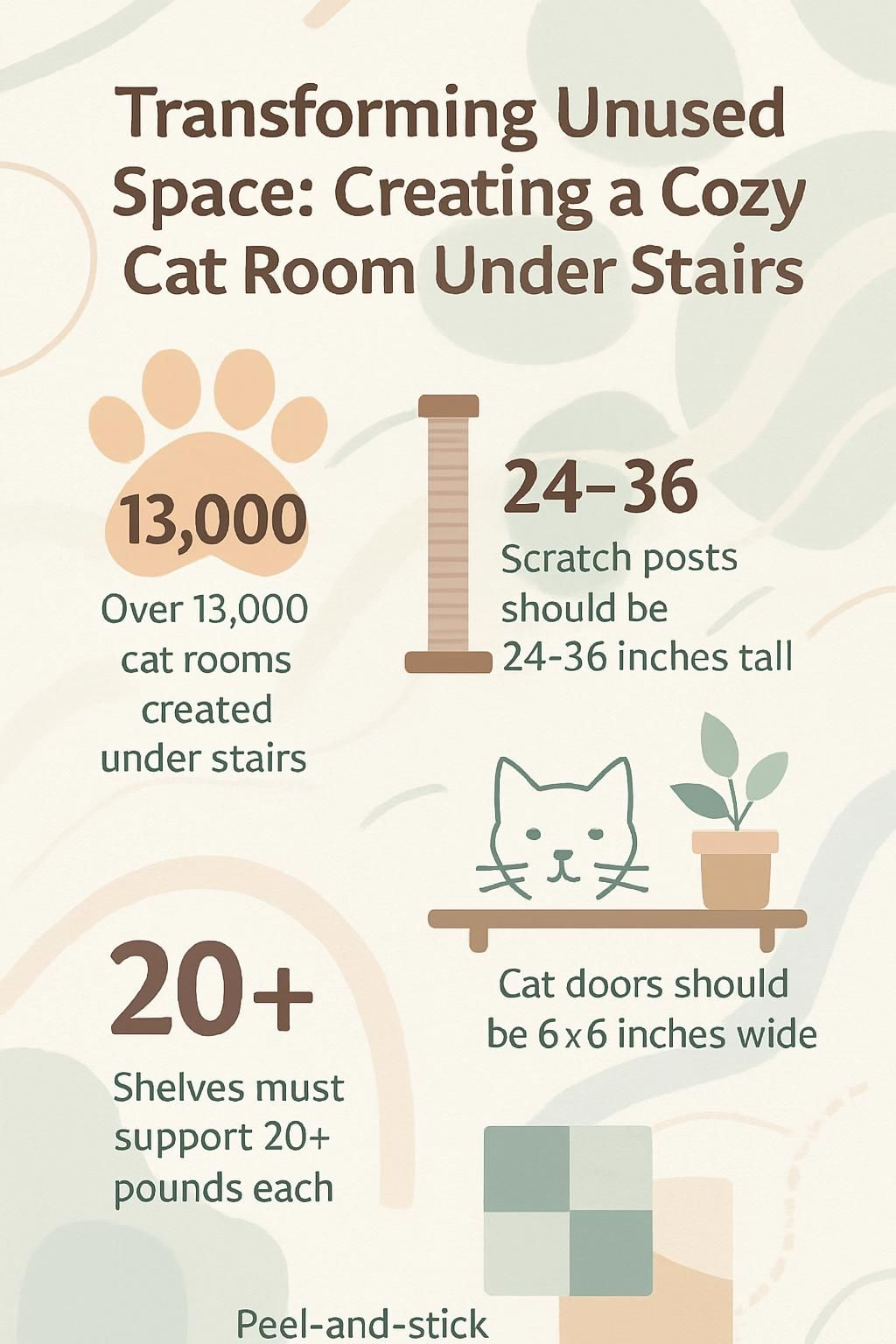
Planning Your Cat Room Under the Stairs
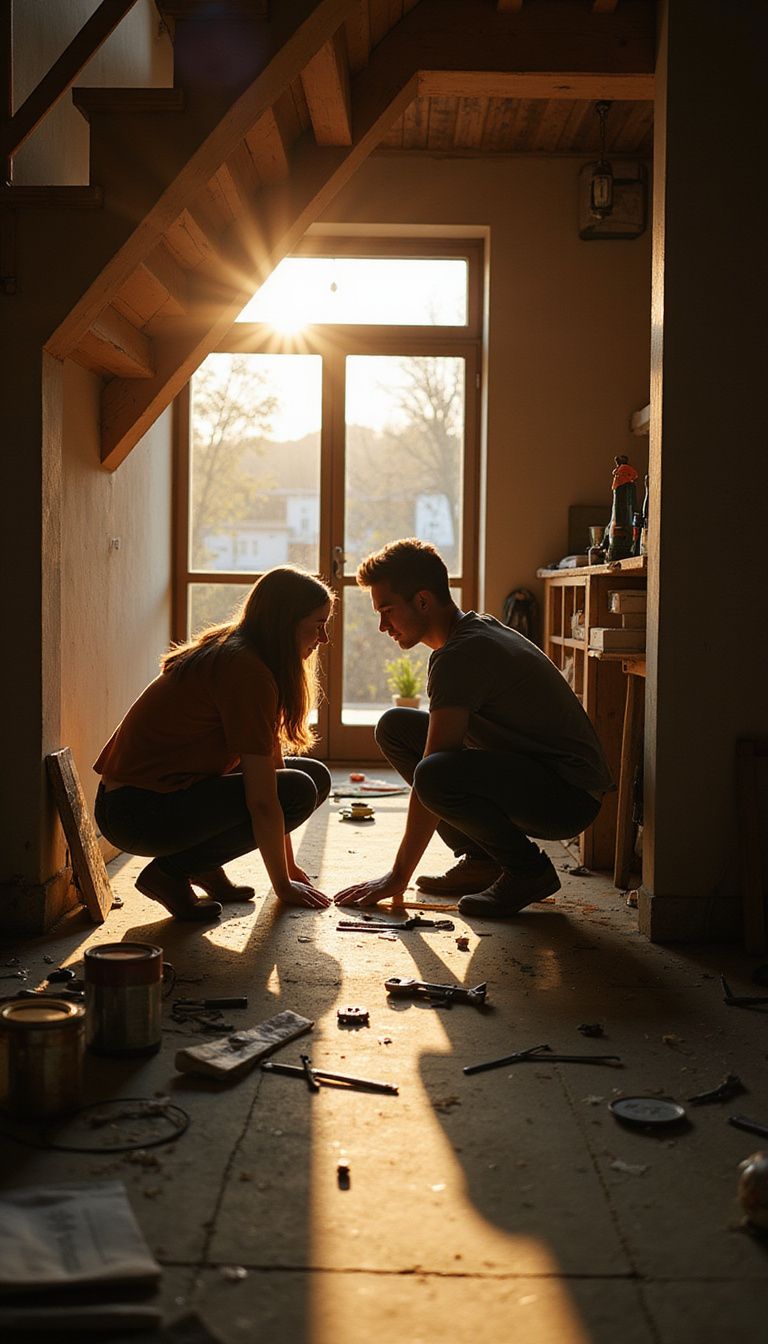
A cozy cat room starts with good planning and careful space checks. We need to measure the area under your stairs and pick fun designs that match your home's style.
Measuring and assessing the space
Creating a cat room under stairs needs careful space planning. Our team has helped many cat owners turn their unused spaces into perfect pet havens since April 2022.
- Measure the total height of your under-stairs space from floor to ceiling. The tallest point must fit cat trees or climbing posts.
- Check the width of the space at both ends. Most under-stairs areas range from 3 to 6 feet wide.
- Map out spots for the cat litter box that allow easy cleaning access. Place it away from feeding areas.
- Test the flooring surface. Peel-and-stick tiles or marble-look tiles make cleaning simple.
- Look for existing electrical outlets to add proper lighting. Good lighting helps cats feel safe.
- Mark spots for air vents or fans. Fresh air flow stops odors from the cat litter box.
- Take photos of the space to plan shelving spots. Cats need high places to climb and watch.
- Note any pipes or wiring that might block construction. Keep these areas clear.
- Draw the floor plan with exact measurements. This helps buy the right size items.
- Check door space needed for your cat's easy entry and exit. Standard cat doors need 6×6 inches.
Choosing a theme or design concept
Your cat's new space under the stairs needs a clear theme to make it perfect. We picked bright colors and fun patterns for our cats' rooms to match our home's style. Most cats love cozy spaces with soft textures and warm tones that help them feel safe and happy.
A cat's room should be their own special kingdom, filled with comfort and joy.
The right theme makes a big impact on both cats and humans. Simple themes work best – like a forest theme with green walls and tree-shaped cat trees, or an ocean theme with blue walls and wave-shaped shelves.
Our cats loved the beach theme we made with sand-colored carpet and shell-shaped beds. The space under the stairs fits these ideas well since it already feels like a snug cave.
Safe materials matter most in any theme you pick. Cats need non-toxic paints and scratch-proof surfaces in their space. The animal shelter near us suggests using cat-safe fabrics that can handle lots of use.
Next, we'll look at the must-have items that make a cat room cozy and fun.
Essential Features for a Cozy Cat Room
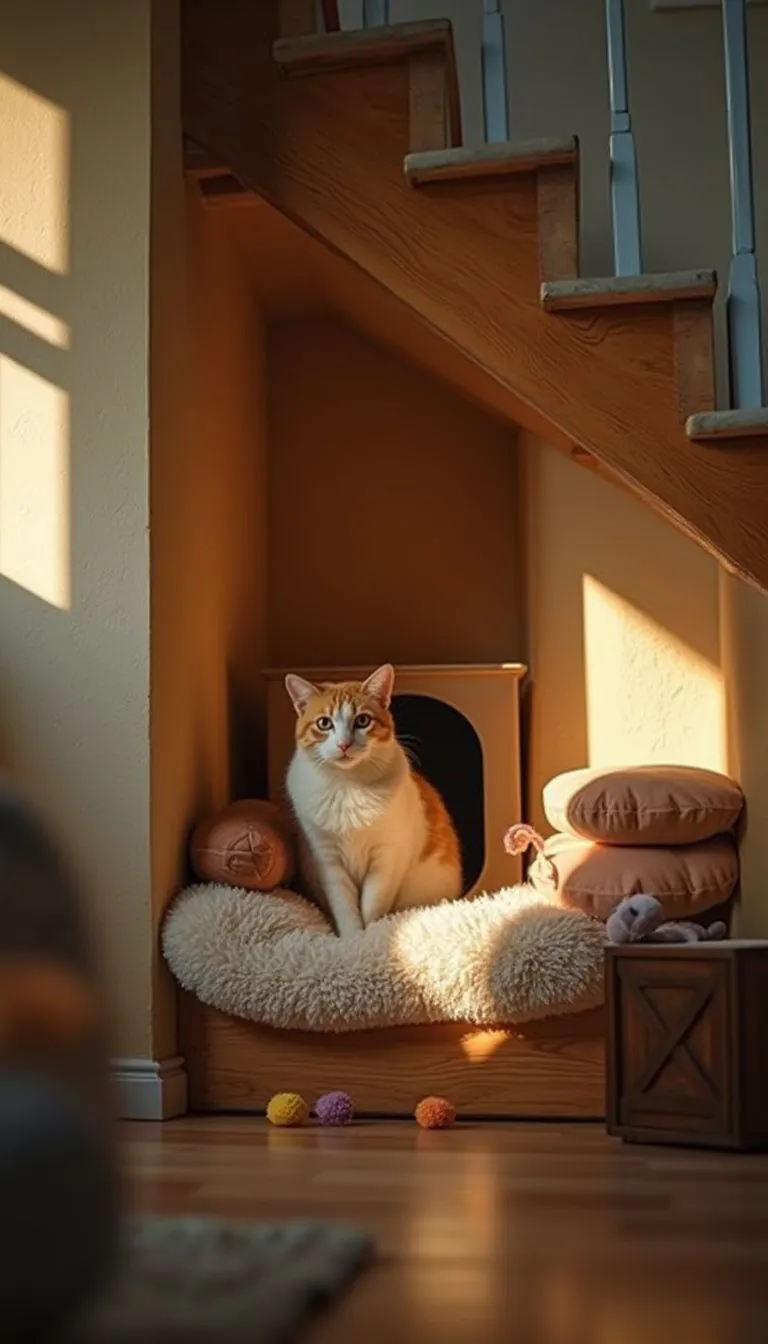
A cozy cat room needs key items to keep your cats happy and safe. We'll show you how to create the perfect spot with smart storage ideas for litter boxes under the stairs, plus fun spots for your cats to play and rest.
Comfortable bedding
Cats need soft, warm spots to rest in their under-stairs space. We suggest placing plush beds or cushions in multiple spots to give your cat options. Our cats love memory foam beds with raised sides that create a snug feeling.
Small blankets or heated pads add extra comfort during cold days.
Your cat's bedding needs regular cleaning to stay fresh and cozy. We place washable bed covers in spots where our cats spend most time. Each bed should sit away from the litter box area under the stairs.
Next, let's explore how scratching posts and climbing areas make the space more fun for your cat.
Scratching posts and climbing areas
A cozy bed leads our cats to need places for play and exercise. Our furry friends need spots to stretch, scratch, and climb in their under-stairs space. We must add scratching posts and climbing areas to keep them active and happy.
Scratching posts give cats a perfect spot to mark their space and keep their claws healthy. We suggest placing 2-3 posts of different heights near the entrance of the under-stairs area.
Sisal rope posts work great because they last long and cats love their texture. Short posts should measure 24 inches, while taller ones can reach up to 36 inches.
Wall-mounted shelves and climbing poles create fun paths for cats to explore their space. We space these items 12 inches apart to let cats jump safely between spots. Small carpet squares on wooden shelves give good grip for landing spots.
Clear paths between climbing spots help cats move freely in their under-stairs hideaway.
Hidden litter box solutions
We found smart ways to hide litter boxes under the stairs. Our cats need space to do their business away from their sleeping spots. Most cats prefer their litter box far from where they rest and play.
This setup keeps the living space clean and fresh.
Our favorite trick puts the litter box inside a built-in cabinet under the stairs. We cut a small door in the side for easy cat access. The cabinet door lets us clean the box fast.
Good air flow keeps smells away through small vents in the back of the cabinet.
The space under stairs works great for hidden litter boxes. We made sure to add bright lights inside the cabinet. Our cats love their private bathroom spot. The setup keeps litter mess contained and makes our home look neat.
Some cats take time to like new spots, but most adjust in a few days.
Creative Design Ideas for Cat Rooms
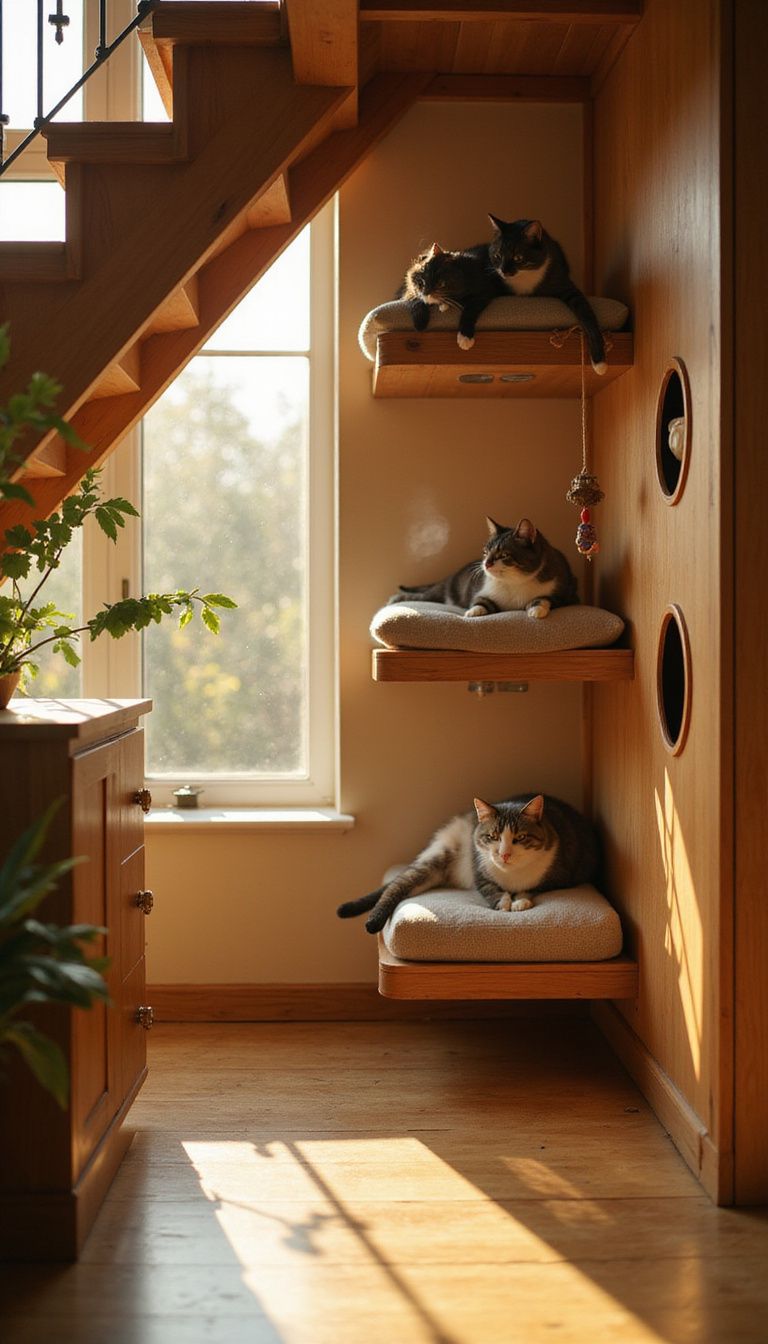
Your cats will love to play and explore in their own special hideaway under the stairs. We can turn this cozy nook into a fun playground with built-in perches, cat doors, and wall toys that keep your pets happy and active.
Built-in shelves for climbing
Built-in shelves turn dead space under the stairs into a cat paradise. We love to mount sturdy wooden platforms at different heights to create an exciting climbing path. Our cats need 12 inches of shelf width to move safely and stretch out.
The shelves must support at least 20 pounds each to hold multiple cats.
Strong brackets and proper wall anchors keep shelves stable for active cats. We space the shelves 14-18 inches apart vertically so cats can jump easily between levels. Adding soft carpet or sisal rope to shelf surfaces gives cats better grip while climbing.
Next, let's look at how cat doors make the space more accessible.
Cat doors for easy access
A cat door creates a perfect entry point for your cats to access their cozy space under the stairs. We suggest installing a basic flap-style door that swings both ways, making it easy for cats to push through.
Small cat doors cost between $15 to $30 at most pet stores, while electronic versions range from $50 to $100.
Our cats love having their own special entrance to their room under the stairs. The door size matters a lot – we picked a 6-inch by 6-inch opening that fits most adult cats comfortably.
We placed the door at floor level, about 4 inches from the ground, so our senior cats can step through without jumping. The door gives them privacy and helps keep litter box odors contained in their space.
Wall-mounted toys and decorations
Simple rope toys tied to wall hooks create endless fun for active felines.
Decorative cat shelves serve as both play spots and pretty wall art. We mount curved perches and flat platforms to make cozy spots for our cats to watch their domain. Small LED lights near these perches create a warm glow that makes the space more inviting.
The shelves need strong brackets that hold up to 20 pounds each for safety.
Sisal-wrapped posts fixed to the walls give cats more places to scratch and climb. We space these posts 12 inches apart to form a fun climbing path. Small baskets attached to the wall hold toys and treats within easy reach.
This setup keeps the floor clear while giving cats lots of play options in their special space.
Cat Room Ideas for Small Spaces

Small spaces need smart ideas for cat rooms. Our latest project shows how to fit cozy cat spots in tight areas under the stairs. We placed peel-and-stick tiles on the walls to create a fun look that got 13,000 likes on social media.
The marble-look floor tiles add style while staying easy to clean.
A tiny cat room must include basic needs in clever ways. We tucked a litter box in a hidden corner under the stairs with good air flow. Our design adds built-in spots for cat beds and toys that save floor space.
The setup earned 9,200 comments from other cat lovers who tried similar ideas in their small homes. Cats need vertical space to climb and play, so we added compact shelves that lead to cozy nooks above.
Tips for DIY Construction

Building a cat room needs safe tools and proper planning. We'll show you the best ways to make a cozy space under the stairs for your cats with basic tools from your local store.
Selecting safe materials
Safe materials stand as the top priority for our cat room project under the stairs. We need to pick pet-friendly peel-and-stick tiles for the walls and floors. Marble-look floor tiles offer both style and safety for our feline friends.
These materials must pass strict safety tests to protect our cats from harm.
Our cats spend lots of time in their special room, so we must use non-toxic adhesives and finishes. The materials we pick need to be tough and easy to clean. This includes scratch-resistant surfaces that won't chip or peel.
Each product requires a safety check before we buy it for the cat room.
The right materials create a safe space for cats to play and rest. We focus on items that meet pet safety rules in the USA. Strong, washable surfaces help us keep the area clean. The litter box area needs special attention with moisture-proof materials that stop odors from spreading under the stairs.
Proper ventilation and lighting
Good air flow keeps your cat's room fresh and clean. We suggest adding a small fan or vent in the under stairs space to move stale air out. Fresh air helps stop bad smells from the litter box and keeps the area pleasant for your cat.
Light makes the space more inviting for your furry friend. We installed LED strips along the walls to create soft lighting that cats love. A small window or light tube can bring natural light into dark corners.
The right mix of light helps your cat feel safe and relaxed in their special spot under the stairs.
Natural light also helps us spot any dirt or mess that needs cleaning. Our cats prefer spaces with both bright and dim areas to match their daily routines. The mix of lighting lets them choose sunny spots for naps or darker areas for quiet time.
LED lights use little power and stay cool, making them perfect for small spaces.
Conclusion
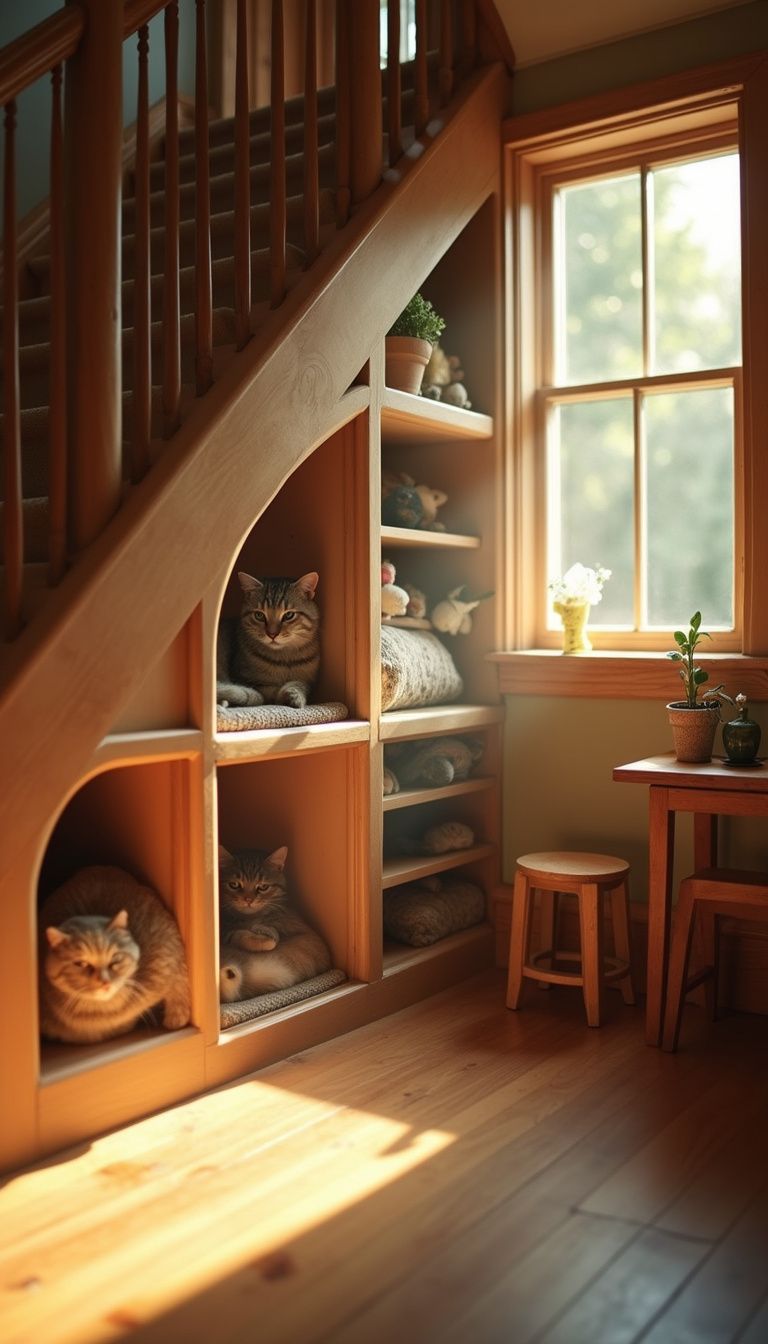
A cozy cat room under your stairs creates a special space for your feline friend. Your cat needs a safe spot to call home, and this project turns wasted space into a perfect hideaway.
Smart design choices like built-in shelves and hidden litter boxes make the room both fun and practical. The success of many cat owners proves that these rooms bring joy to pets and their families.
For more inspiration on optimizing small areas for your feline friend, check out our guide on cat room ideas for small spaces.

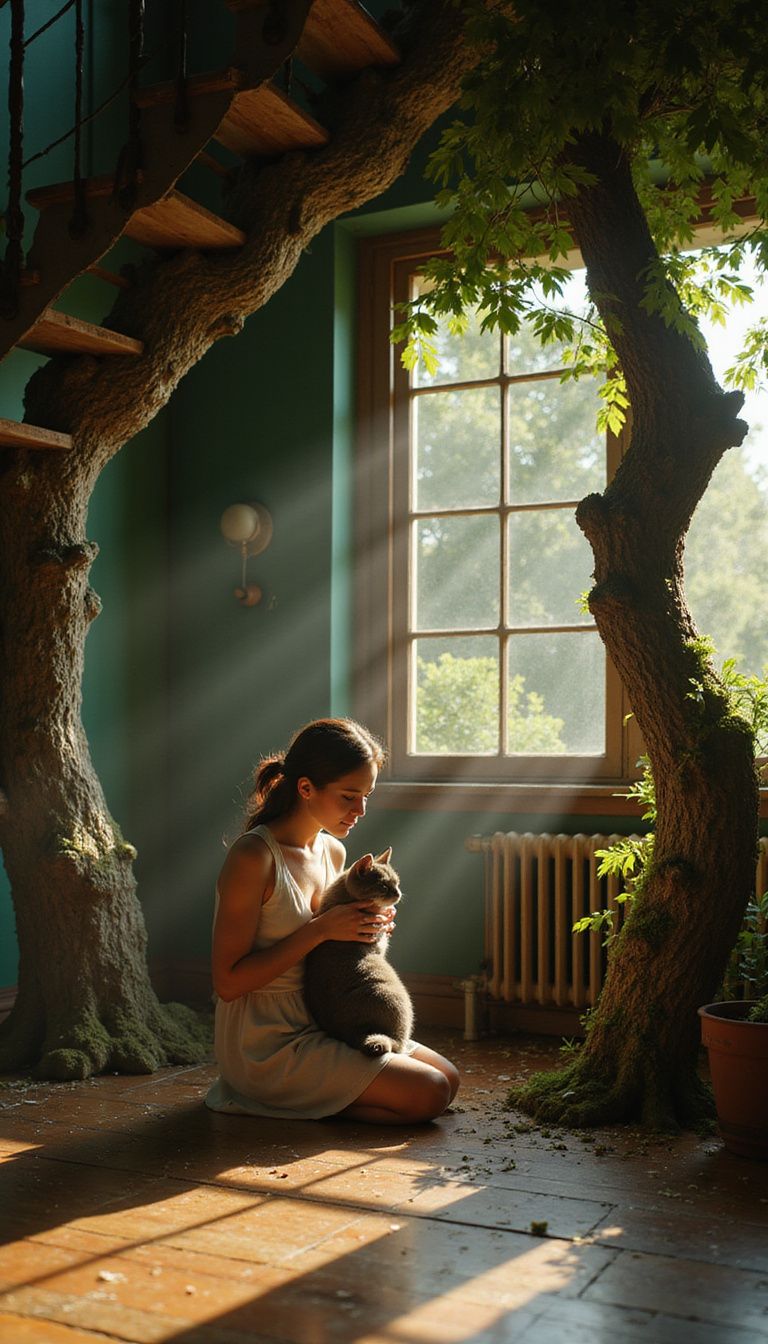
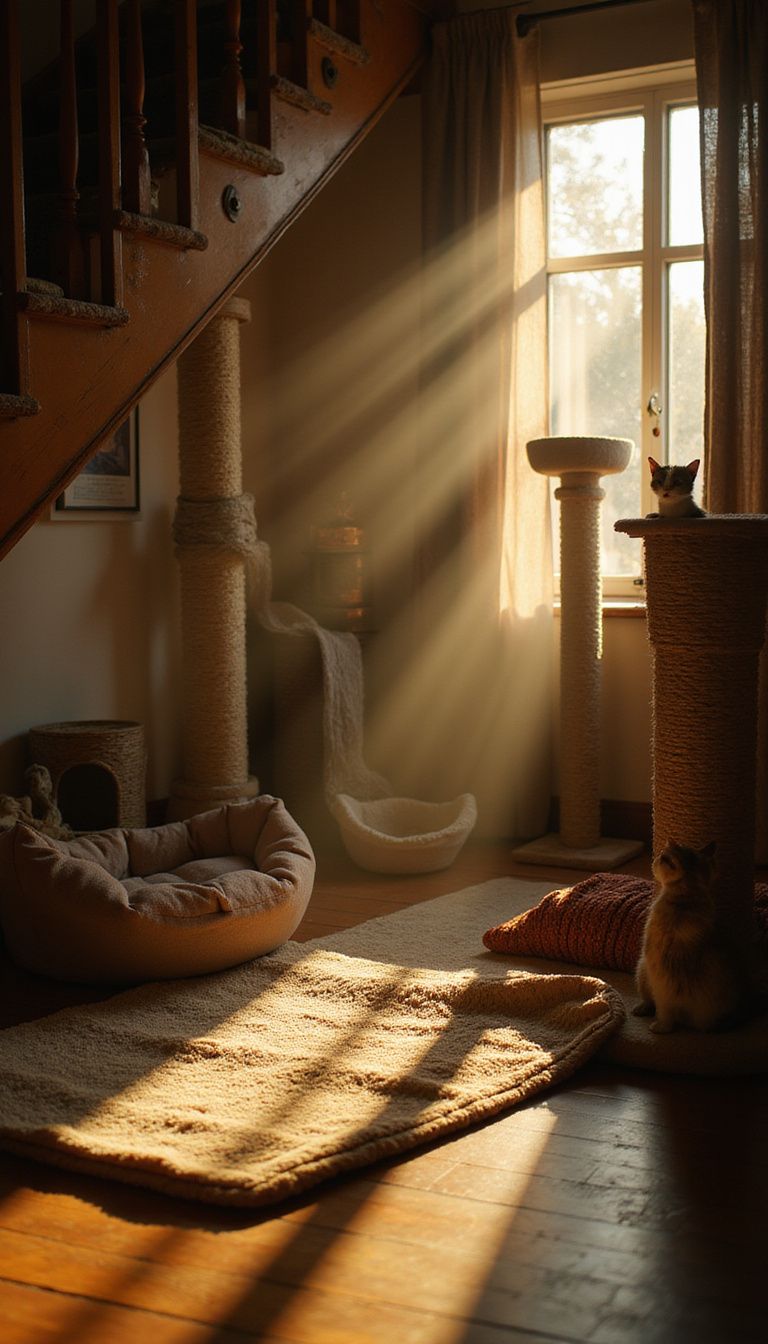
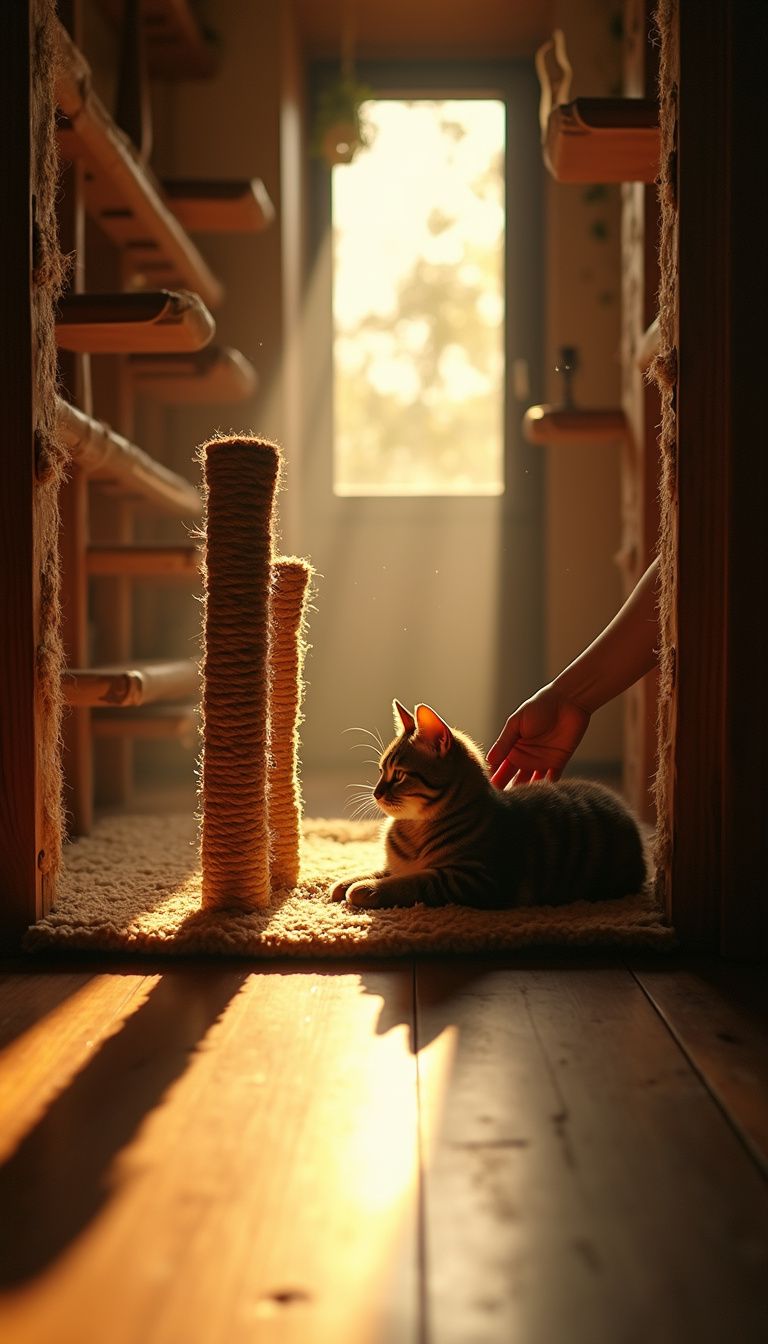
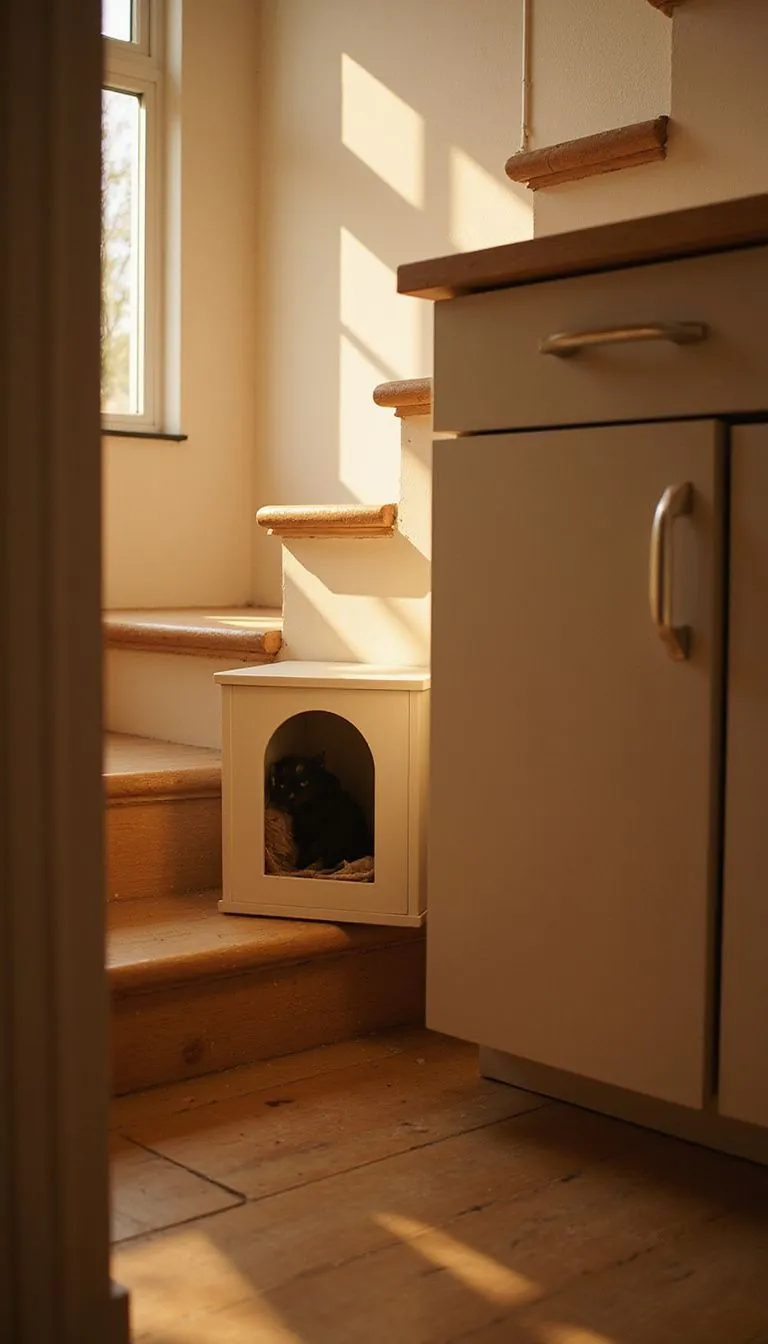
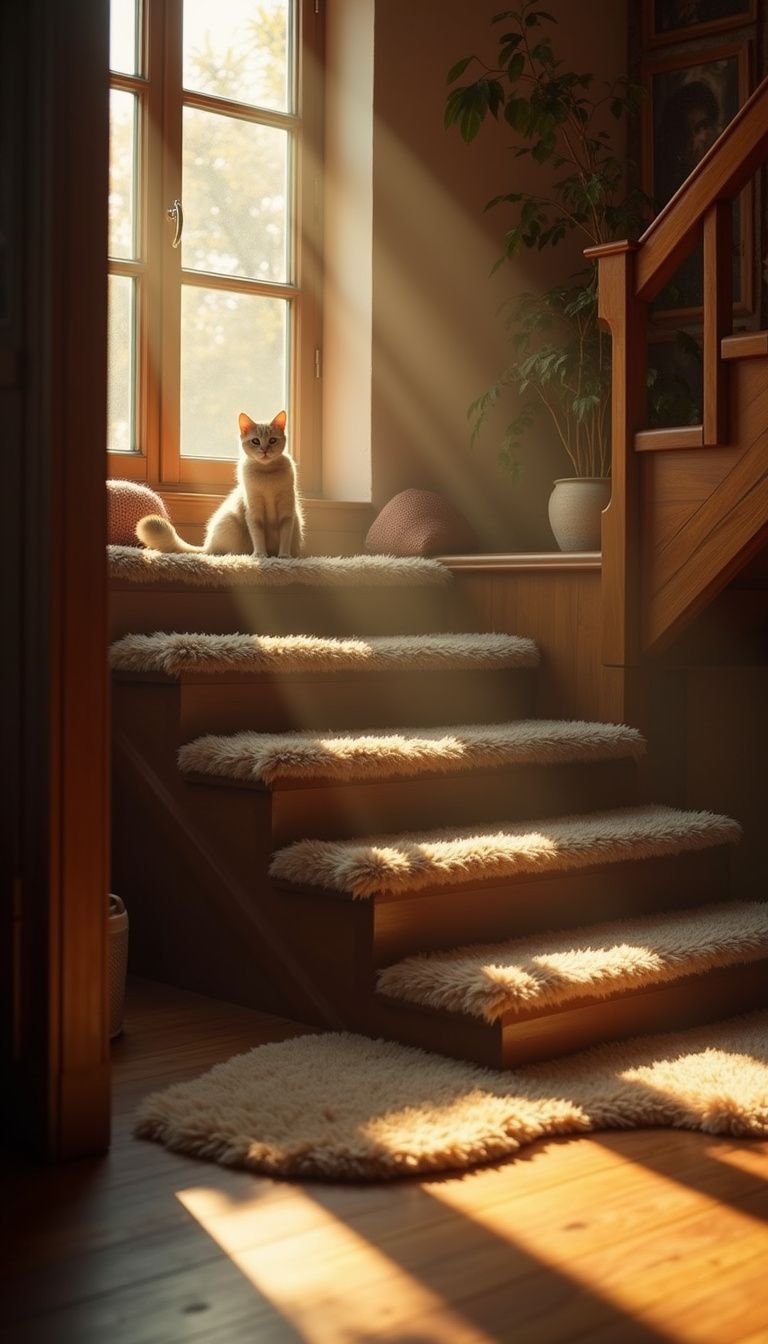
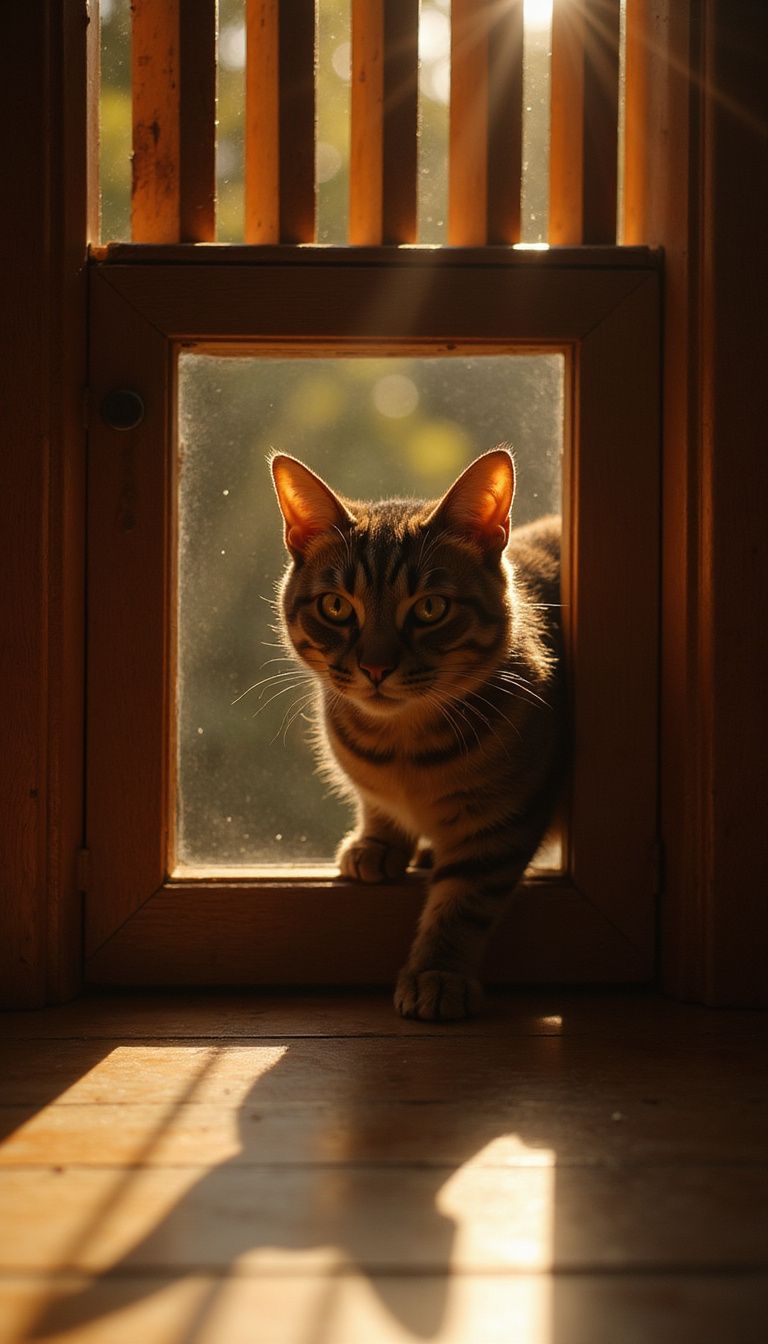
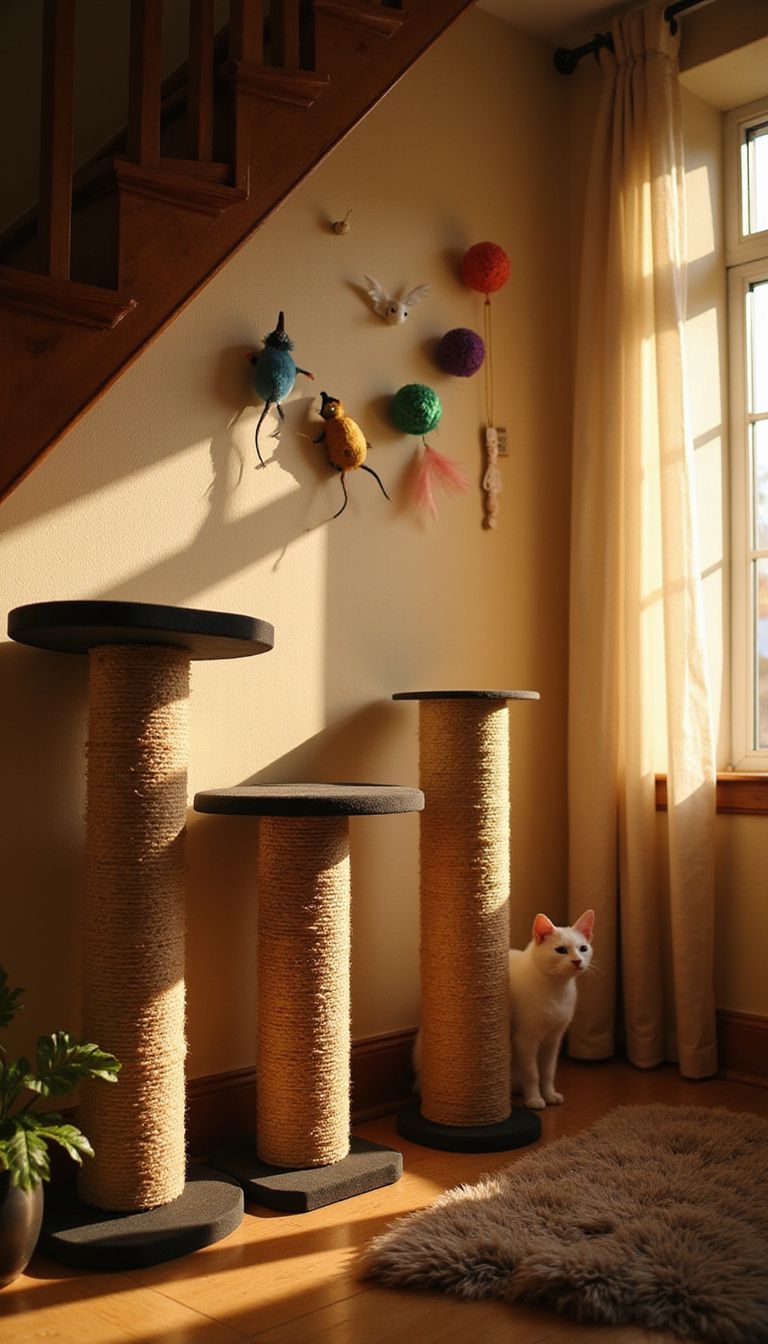

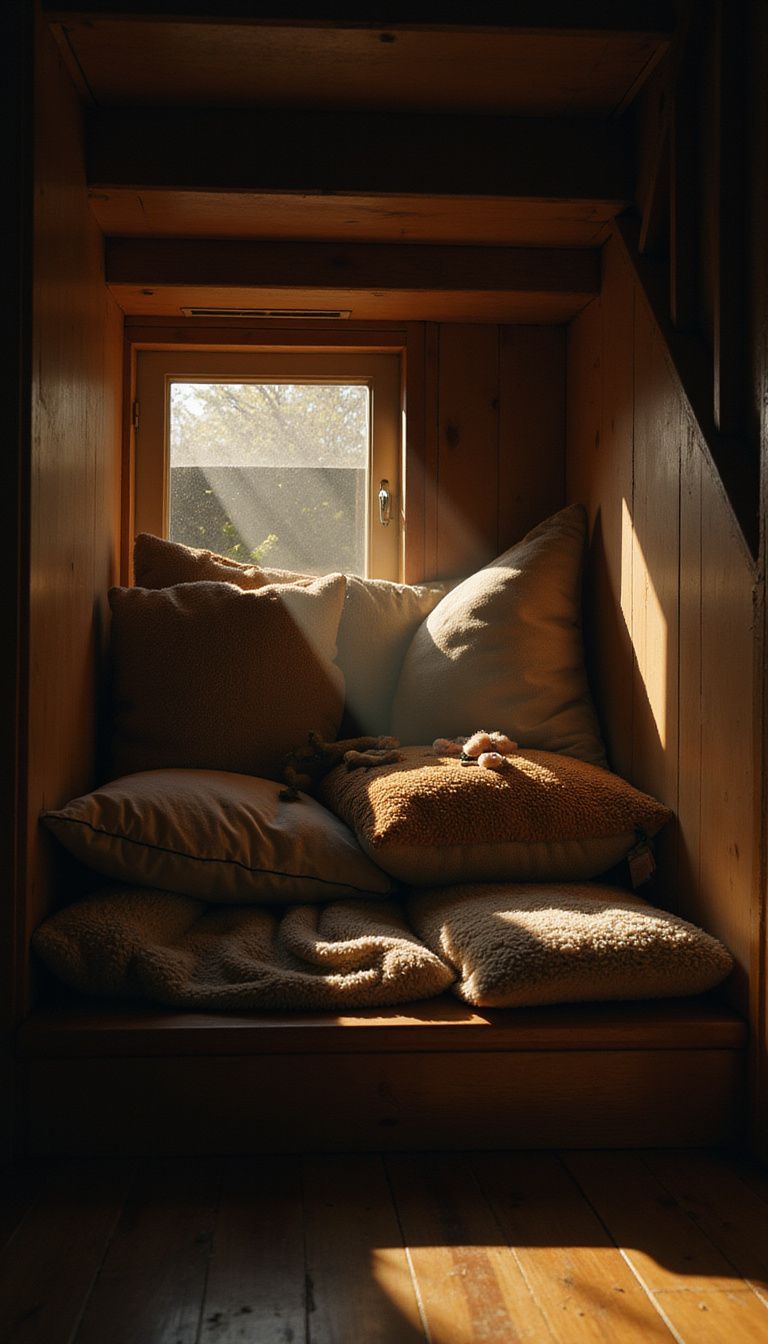



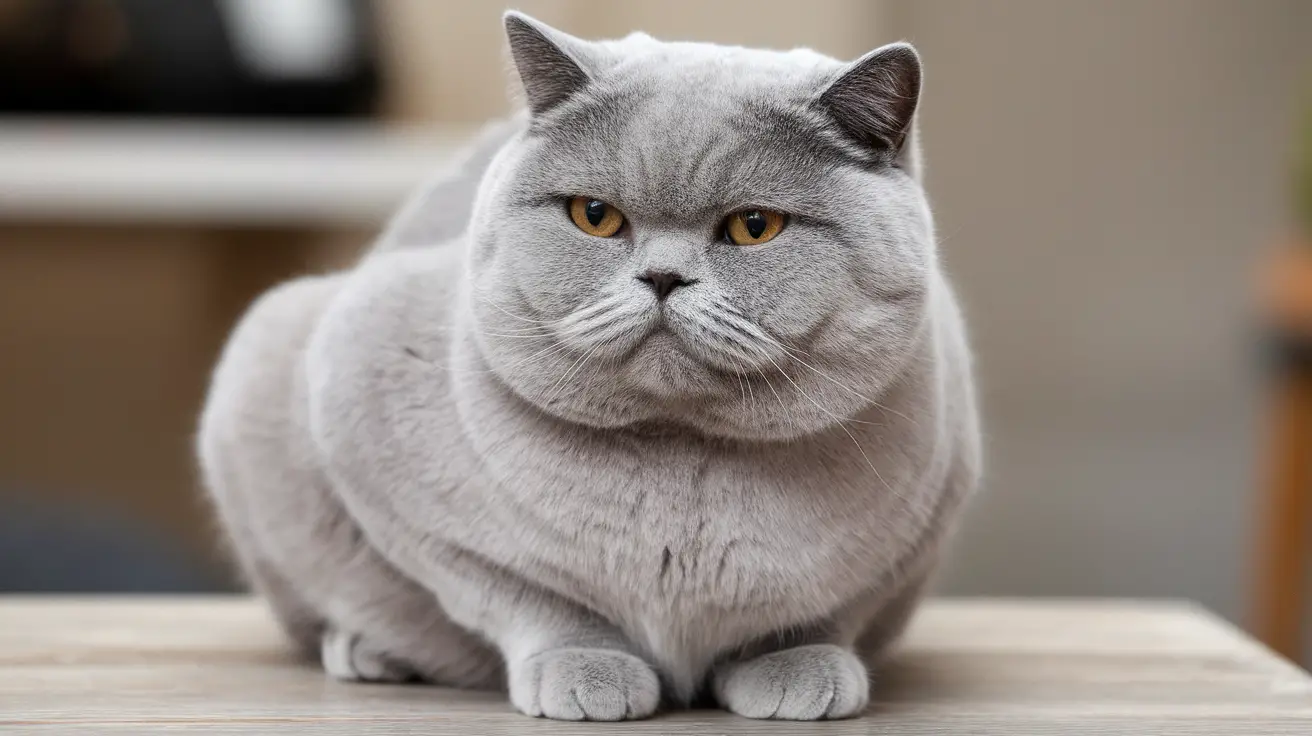


Leave a Reply